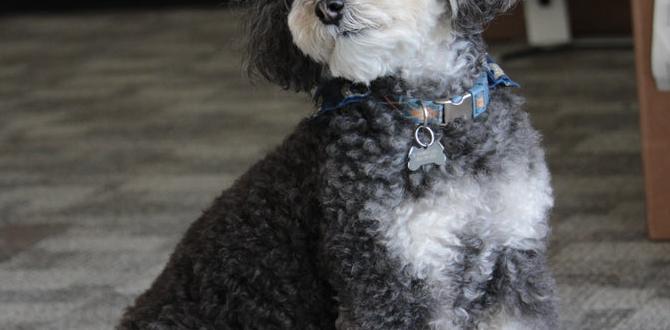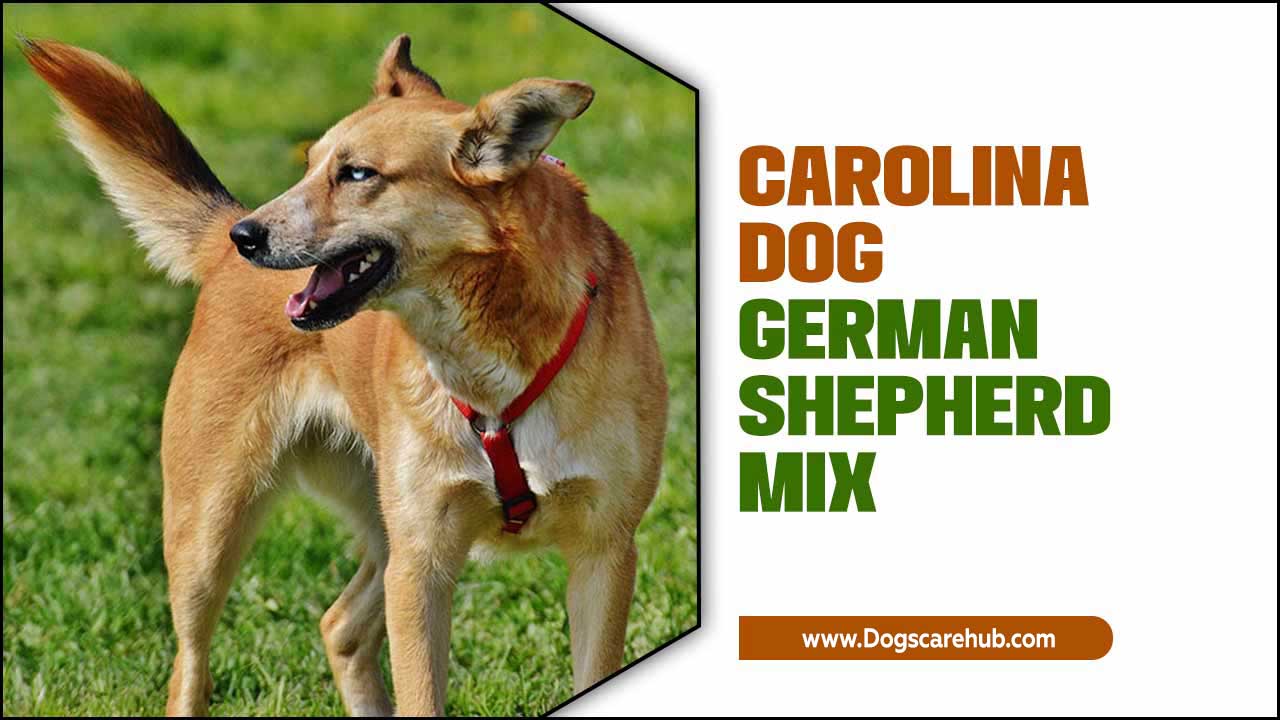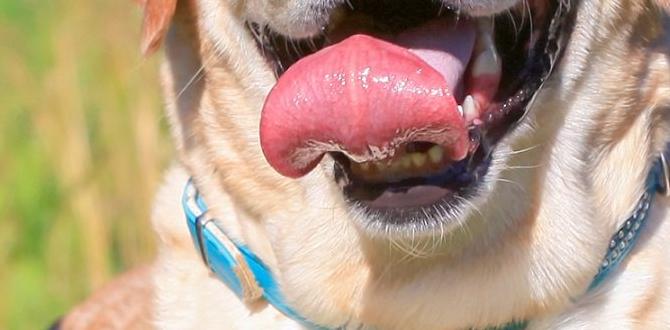Have you ever met a rescue dog who seemed anxious and scared? It can be tough to see a dog in distress. Many people wonder how to help these wonderful animals feel safe and calm. Aggressive behavior often hides fear or past trauma. Understanding this can change everything.
Imagine adopting a rescue dog. At first, it seems like a dream. But then, you notice growls and barks. It’s easy to feel lost. How can you calm an aggressive rescue dog and build trust? There are effective ways to help these dogs feel relaxed and secure.
Did you know most aggressive dogs act out because of fear? With patience and love, you can guide them to a happier life. It’s like teaching a child to ride a bike. They need your support and encouragement! So, let’s explore some steps to calm your dog and build a strong bond.
Calming Aggressive Rescue Dog: Effective Techniques And Tips
Calming Aggressive Rescue Dog
Calming an aggressive rescue dog can feel challenging, but it’s possible with patience and love. Key techniques include establishing a safe space, using treats for positive reinforcement, and practicing calm body language. It’s vital to avoid harsh discipline and focus on building trust. Did you know that many aggressive behaviors can stem from fear? Understanding this helps in choosing the right approach. Consistency and gentle leadership often lead to a happier, more relaxed dog ready to enjoy life.Understanding Aggression in Rescue Dogs
Different types of aggression (fearbased, territorial, etc.). Factors contributing to aggressive behavior in rescue dogs.Rescue dogs can show aggression for many reasons. Some types include fear-based aggression, where the pup feels scared and reacts. Others might be territorial aggression, protecting their home turf like a furry guard dog. Factors like past trauma, lack of socialization, or even health issues can contribute to this behavior. Remember, understanding their triggers helps us calm them down—think of it as decoding a furry puzzle instead of just barking at it!
| Type of Aggression | Description |
|---|---|
| Fear-based | The dog feels threatened and reacts. |
| Territorial | Protects their space from intruders. |
| Protective | Defends their owner or another pet. |
| Frustration | Starts barking when they can’t reach something. |
Recognizing Signs of Aggression
Body language indicators of aggression. Situations that may trigger aggressive responses.Dogs use body language to show how they feel. Signs of aggression may include:
- Ears pinned back
- Hair standing on end
- Baring teeth
- Growling or barking
Some situations may trigger these aggressive reactions. For example, a dog might feel threatened by a loud noise, an unfamiliar person, or another animal getting too close. Understanding these signs can help keep both the dog and people safe.
What should I do if I see signs of aggression?
If you notice aggressive signs, remain calm and give the dog space. Avoid sudden movements, and don’t stare directly at the dog.
Creating a Safe Environment
Importance of a calm home setting. Space management and safe zones for the dog.A calm home is like a warm hug for your rescue dog. It helps them feel safe and comfy. Imagine trying to relax in a messy room. Not fun, right? Keeping things simple and organized gives your dog space to unwind.
| Safe Zone Ideas | Benefits |
|---|---|
| Quiet corner with a bed | Comfort and security |
| Barrier to prevent distractions | Less stress for pups |
| Soft lighting | Relaxing atmosphere |
Creating these safe zones is important. It gives your dog a place to escape if things get too loud. Remember, you want them cozy, not panicked. A happy dog means a happy home!
Implementing Positive Reinforcement Training
Techniques for shaping desired behaviors. Longterm benefits of positive reinforcement methods.Training your dog with positive reinforcement can be both fun and effective. Treats, praise, and toys can help shape good behavior. When your dog does something right, reward them! It’s like giving a high five for a job well done. Over time, these methods teach your furry friend what you expect. The long-term benefits are huge! Dogs trained this way tend to be happier and less stressed. Who wouldn’t want a happy pup? After all, a calm dog is a good dog!
| Technique | Benefit |
|---|---|
| Clicker Training | Quick and clear communication |
| Treat Rewards | Encourages repetition of good behavior |
| Praise and Affection | Builds trust and bonding |
Did you know? Dogs trained with positive reinforcement are less likely to show aggression and more likely to follow commands. So, if you want a calm, happy pup, grab those treats and start training! Who knew training could be a dance party with treats?
Desensitization Techniques
Gradual exposure to triggers. Controlled socialization opportunities.Helping a rescue dog become calm takes time and a little magic! First, use gradual exposure to triggers. This means slowly introducing them to things that scare them. For example, if your dog barks at squirrels, show them a squirrel from far away. Next, create controlled socialization opportunities. Let your dog meet friendly pups in a safe spot. This helps them learn that not every dog wants to take their toy! Remember, patience is key—and treats help too!
| Technique | Description |
|---|---|
| Gradual Exposure | Show your dog triggers slowly to reduce fear. |
| Controlled Socialization | Let your dog meet others safely to build confidence. |
Seeking Professional Help
When to involve a professional trainer or behaviorist. Questions to ask before hiring a specialist.Sometimes, dogs need more help than we can give them. If your dog shows signs of aggression, it might be time to call a professional. Look for trainers who focus on positive methods. Ask them questions like:
- What is your experience with aggressive dogs?
- Can you show me your training methods?
- How do you handle tough situations?
It’s important to find someone you trust. Your dog’s safety and happiness depend on it. Remember, patience is key!
When should you seek professional help?
If you are uncertain about handling your dog’s aggression, it’s best to involve a professional. Look for signs like frequent growling, biting, or fearfulness. Getting help early can prevent major problems later.
Building Trust and Bonding
Activities that promote trust between dog and owner. Importance of patience and consistency in building a relationship.Trust is key when connecting with your rescue dog. Spend quality time together by playing games or going for walks. These activities help create fun memories. Always use a calm voice when giving commands. This encourages your dog to feel safe. Remember, patience is important. Trust takes time, so be consistent. Use treats to reward good behavior. This shows your dog they can rely on you. Building this bond starts with small steps and love.
How do you build trust with an aggressive rescue dog?
To build trust, focus on positive reinforcement. This means rewarding good behavior with treats or praise. Also, try to remain calm and patient. With kindness, your bond will grow stronger.
Tips for Building Trust:
- Spend time playing together.
- Use a gentle voice when talking.
- Be consistent with commands.
- Reward good behavior with treats.
- Show patience as trust grows.
Ongoing Maintenance and Support
Strategies for maintaining calm behavior over time. Resources for continued learning and support for owners.Keeping your dog’s calm behavior over time is important. Start with consistent training. Use positive reinforcement methods. Regular exercise also helps. It keeps your furry friend happy. Remember, dogs need routine. A predictable schedule can make them feel safe.
Support is available for dog owners. Here are some helpful resources:
- Books on dog behavior
- Online training courses
- Local dog workshops
Connecting with other dog owners can be helpful too. Share tips and experiences. Ongoing education makes you a better owner.
How can I support my dog’s calm behavior?
To support your dog’s calm behavior, establish a daily routine and provide consistent training. Use positive reinforcement when your dog behaves well. Regular playtime and exercise also help your dog stay relaxed.
Conclusion
In conclusion, calming an aggressive rescue dog takes patience and understanding. You can use positive reinforcement, consistent training, and plenty of love. Remember, it’s important to identify triggers that cause aggression. By following these steps, we can help our furry friends feel safe and happy. For more tips, read books or seek advice from dog trainers. Your dog will thank you!FAQs
What Are Some Effective Techniques To Calm An Aggressive Rescue Dog During Stressful Situations?To calm an aggressive rescue dog, you can use a few simple techniques. First, create a safe space for them, like a quiet room or a cozy bed. You can use soft voices and gentle touches to help them relax. Playing soothing music or providing their favorite toy can also help. Lastly, be patient and give them time to feel safe with you.
How Can Positive Reinforcement Be Used To Modify Aggressive Behavior In Rescue Dogs?You can use positive reinforcement to help rescue dogs that show aggressive behavior. This means giving them a treat or praise when they act calmly. For example, if a dog stays quiet when someone comes near, you can say “Good boy!” and give a treat. This teaches the dog that being calm is a good thing. Over time, the dog will learn to be less aggressive.
Are There Specific Training Exercises That Help Build Trust And Reduce Aggression In Rescue Dogs?Yes, there are special exercises that can help. You can play games like fetch or hide-and-seek. These games make the dog feel happy and safe. Giving treats when they do something good helps build trust too. Spending time together while training builds a strong bond.
What Role Does Socialization Play In Managing Aggression In Rescue Dogs, And How Can It Be Implemented?Socialization helps rescue dogs learn how to behave around people and other animals. By meeting new friends and trying new things, dogs become less scared and less aggressive. You can help by introducing your dog to different places, sounds, and friendly dogs. Always use treats and praise to make it fun and positive for your dog. This way, they will feel happy and safe.
How Can A Dog’S Environment Be Adjusted To Minimize Triggers For Aggression And Promote Calmness?To make your dog’s home peaceful, keep the space quiet and calm. Remove loud noises and busy areas that might scare them. Give your dog a safe spot, like a cozy bed, where they can relax. Spend time with them and play gently to help them feel happy and secure. A happy dog is a calm dog!
Meet Elyse Colburn, the devoted canine companion and storyteller behind the enchanting world of “Tales, Tails, and Adventures Unleashed.” A passionate dog enthusiast with a heart full of paw prints, Elyse Colburn shares heartwarming tales and insightful adventures, celebrating the joy, loyalty, and endless antics that make every dog a true hero. Join Elyse Colburn on this tail-wagging journey, where every post is a love letter to our four-legged friends.







